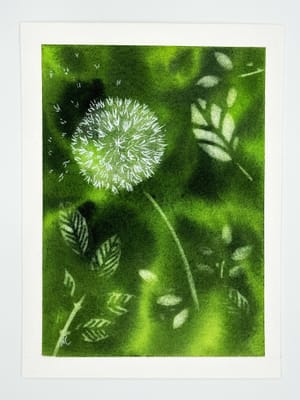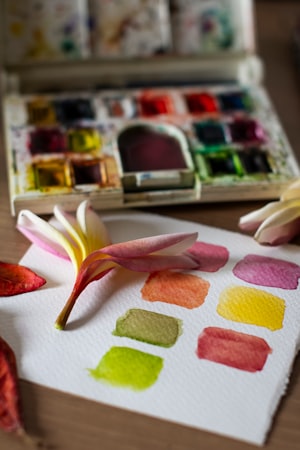Have you ever wondered how artists achieve those crisp, white areas in their vibrant watercolor paintings? The secret lies in a remarkable tool called masking fluid. Today, we'll delve into the fascinating world of masking fluid and explore its versatile applications in watercolor art.
What is Masking Fluid and How Does it Work?
Masking fluid is a liquid latex solution that acts as a protective barrier on watercolor paper. By applying masking fluid to specific areas, you can safeguard them from the watercolor paint that follows. Once the paint has dried, the masking fluid is gently removed, revealing untouched white spaces amidst a sea of color.
Applying Masking Fluid: Tools and Techniques
When it comes to applying masking fluid, artists have an array of tools at their disposal. Whether you prefer brushes, toothpicks, cotton swabs, toothbrushes, or ruling pens, each instrument provides a unique effect. For intricate details and fine lines, specialized markers with fine needle nibs are available.



What Does it Look Like?
Masking fluid is sold in different forms as well. You can buy bottles of the liquid mask as well as markers for making fine lines and detailed work.


Before You Begin: Preparation is Key
Effective planning is crucial when using masking fluid. In most cases, it is applied to the paper before any paint is used, preserving the pristine whiteness of the paper. Think of masking fluid as a form of "white paint" that retains its brilliance until the final reveal.
To ensure optimal results, it's recommended to prepare your tools. If you're using a brush, consider dedicating an old brush solely for masking fluid application. Prior to dipping it in the masking fluid, saturate the brush in soapy water to protect the bristles. After use, immediately clean the brush with soapy water to prevent the masking fluid from drying and clogging the bristles.
Important Tips and Tricks for Success
- Handle with Care: Avoid shaking the bottle of masking fluid, as it may result in stringy clumps of latex. Also, the air bubbles in the masking fluid will be transferred to the paper and those tiny bubbles will produce an uneven mask.
- Ensure Dryness: Before applying masking fluid, ensure that your paper is completely dry. Otherwise, the liquid latex may embed itself deeply into the paper fibers, making removal difficult without damaging the paper.
- Do not use a hairdryer or heat tool to hasten drying time. This will also cause the latex to embed in your paper and will not be easily removed. Watch out for sunlight! This may cause fusion of the latex and paper to be a permanent thing.
- Patience is Key: Allow the masking fluid to dry completely before proceeding with painting. Depending on the thickness and amount of fluid applied, it's advisable to wait around 20 minutes. Rushing this step may cause the latex to become embedded in the paper, creating a permanent fusion.
- Gentle Removal: When it's time to remove the masking fluid, opt for a masking fluid pickup tool rather than using your fingers. Fingers can leave oils and smudges on your artwork. Additionally, removing the fluid promptly is advisable, as prolonged exposure can lead to more challenging removal and potential staining effects on the paper.
- Reviving Masking Fluid: If your masking fluid thickens over time, simply add a bit of water to thin it out. This will make application easier and ensure a consistent outcome.
The Marvels of Masking Fluid: Your Artistic Journey
Masking fluid opens up a world of possibilities in watercolor painting. Whether you want to preserve highlights, create intricate details, or explore unique textures, masking fluid is a valuable tool to add to your artistic arsenal. Experiment, take risks, and watch as your paintings come to life with newfound depth and dimension.
Do you use masking fluid in your artwork? We'd love to hear your thoughts and experiences with this magical medium. Share your stories and creations in the comments below, and let's celebrate the artistry of masking fluid together!




